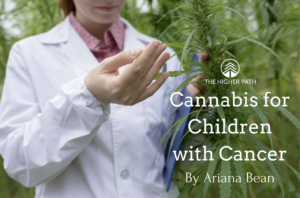Can Cannabis help fight HIV and AIDS?
There have yet to be any breakthroughs regarding the plant’s ability to effectively kill the virus. However, research has concluded that cannabis can help in many ways. Some include protecting damaged nerve cell activity and managing symptoms. Some of these symptoms are induced from the medicine given to HIV patients to stop the virus from attacking the immune system.
The most popular form of treatment is called Highly Active Antiretroviral Therapy (HAART). When you’re trying to function and live your life as normally as possible despite debilitating pain, don’t be afraid to consume as much cannabis as you need to feel comfortable. Based on the differing symptoms, today we’ll aim to cover every method of consumption with respect to the symptom.
Managing cannabis HIV and AIDS treatment symptoms
Nausea
Since edibles can be a turn-off to some with heavy nausea, there are plenty of ways to go about treating the symptom. Tinctures are a great alternative. The benefit to these is that they can be taken under the tongue, and held for a short period of 20 seconds. Rinse and swallow with a glass of water, and wait around 45 minutes to an hour for full effects. Tinctures come in a variety of ratios, meaning you can easily regulate cannabinoids (and therefore, psychoactivity levels).
Cannabinoids
Generally speaking, the best cannabinoid for nausea is CBD and CBDA. Smoking is the quickest form of relief. Although most strains have little to no CBD present, there are quite a few other compounds found in the plant that have been found to help manage nausea. Rather than looking at a plant’s cannabinoid profile, let’s dive into its terpene profile. A terpene that has many benefits, one of which is anti-nausea, is Caryophyllene. Some prominent strains high in Caryophyllene include Girl Scout Cookies, Sour Diesel, and Gelato.
Wasting
One of the most concerning side effects of HAART treatment is what some call wasting: the loss of 10% of your body’s weight in a short period of time. This can be due to the virus, vomiting, or simply loss of appetite. Regardless of where it stems from, wasting is serious as the body is no longer receiving key nutrients, which help fuel your immune system to fight a virus. The science behind the munchies is a very interesting topic for another day, but here’s what we need to know in short: Cannabinoid receptors work synergistically with proopiomelanocortin (POMC) neurons. When certain cannabinoids enter the body, a switch is activated, and the POMC neurons produce endorphins, which in turn increases appetite. The key cannabinoid in this equation: tetrahydrocannabinol, or THC. Appetite stimulation generally occurs at the lower dose of THC (5mg-10mg). If dealing with more than one symptom, 20mg of THC does the trick. Smoking still remains the most popular way of inducing the munchies. The terpene profiles we are looking for are limonene and caryophyllene. Strains high in both terpenes include GMO, Gelato, Lavender Kush, and of course, Girl Scout Cookies.
Another excellent form of consumption often overlooked, are gel capsules. Gel capsules are a fantastic substitute for tinctures. They deliver the precise dose of cannabinoids in just under 30 minutes. Effects are felt within that same edible time range, which can take up to an hour. For patients having difficulty with solid foods, alternatives such as lozenges are effective as well.
Neuropathic pain
To treat nerve pain, patients generally turn to the cannabinoid that relaxes our nervous systems the most, THC. Neuropathy is essentially when our nerves send pain signals to the brain, indicating something is wrong in the specific part of the body. When a virus is introduced, the pain reaches wherever the virus does. When choosing a suitable product for the pain, it’s important to keep in mind exactly what you want to achieve. Are you looking for relief throughout the day? When is the pain at its worst? Are you looking to feel any psychoactive effects? When choosing the best method of consumption to manage nerve pain, make
budtender as many questions as you need. For now, we’ll cover the basics of what tends to work with neuropathic pain. Smoking and inhaling offer the quickest pain relief, but for the shortest period of time (2-3 hours), relative to other forms of consumption. The best strains for full-body pain relief tend to be Indica dominant or CBD dominant strains. Some relaxing and pain-relieving strains include Private Reserve OG (I), Cereal Milk (H), ACDC (CBD), Harlequin (CBD).
If you’re looking for long-lasting relief (5-6 hours) we recommend trying any 1:1 tinctures or edibles. Some fantastic companies that offer the golden ratio include Care By Design, Cosmic View, WYLD, and Breez.
Depression, Stress, and Anxiety
The uplifting properties of cannabis have been discussed for many decades now, and it’s no longer a secret. Cannabis can 100% help with depression, stress, and strong anxiety. Before I tell you to smoke a bowl of Blue Dream, I should mention that depression can stem from many sources. It can be from a lack of dopamine, an external factor causing a feeling of isolation, or simply feeling lost and hopeless. Although cannabis can help with these feelings, it’s important to find what triggers these feelings, and treat those problems first. Let’s jump right in. Smoking, once again, is the most popular form of quick THC release. To alleviate these feelings of depression, look for strains high in Limonene. This terpene can be found in most citrus foods such as Oranges, Lemons, and Limes. What’s so beautiful about this terpene is that it can be found in Indica as well as Sativa strains! Indica strains high in limonene: OG Kush, Tahoe OG, and Wedding Cake. Sativa strains high in limonene: Lemon Meringue, Blue Dream, and Berry White.
For patients looking to stray from smoking, these are plenty of wonderful alternatives! Remember, we’re looking for products that are THC-dominant, and contain some form of limonene. With new ways of making edibles such as nano-emulsification, some of our favorite companies offer gummies high in limonene. The Camino-Excite Wild Cherry gummies are high in the terpene and come in a 5mg dosage. Another great edible high in limonene are the Kiva Lost Farm – Super Silver Haze 10mg gummies. And finally, those of you who know me know my adoration for tinctures, with an emphasis on the golden ratio tinctures. A 1:1 has the perfect balance of THC and CBD, the best of both worlds. THC offers the uplifting and relaxing high, while CBD works its wonders on the serotonin system. With 90% of its production in the gut, serotonin is linked to regulating mood, stress, sleep, and anxiety. With the right amount of CBD, our CB2 receptors located in our gut help balance our serotonin levels, which successively uplift our moods and ameliorate stress and depression.
Are there any negative effects for an HIV/AIDS patient consuming cannabis?
Two Polish pharmacists and researchers, Alicja Szulakowska and Halina Milnerowicz completed a study in 2011 looking for any negative impacts cannabis might have on HIV/AIDS patients undergoing treatment. They found no evidence showing any negative impacts on treatment, meaning cannabis is safe for patients undergoing HAART treatment. Although we state this here, it’s always important to consult with your practitioner or rheumatologist for any interactions between cannabis and your current treatment.
Sources
Szulakowska, A. S., & Milnerowicz, H. M. (2011). Cannabinoids – Influence on the Immune System and Their Potential Use in Supplementary Therapy of HIV/AIDS. InTech Open.
Cichocki, M. C. (2021, May 21). How HAART (Highly Active Antiretroviral Therapy) Works. Verywell Health.
https://www.verywellhealth.com/haart-highly-active-antiretroviral-therapy-48967




